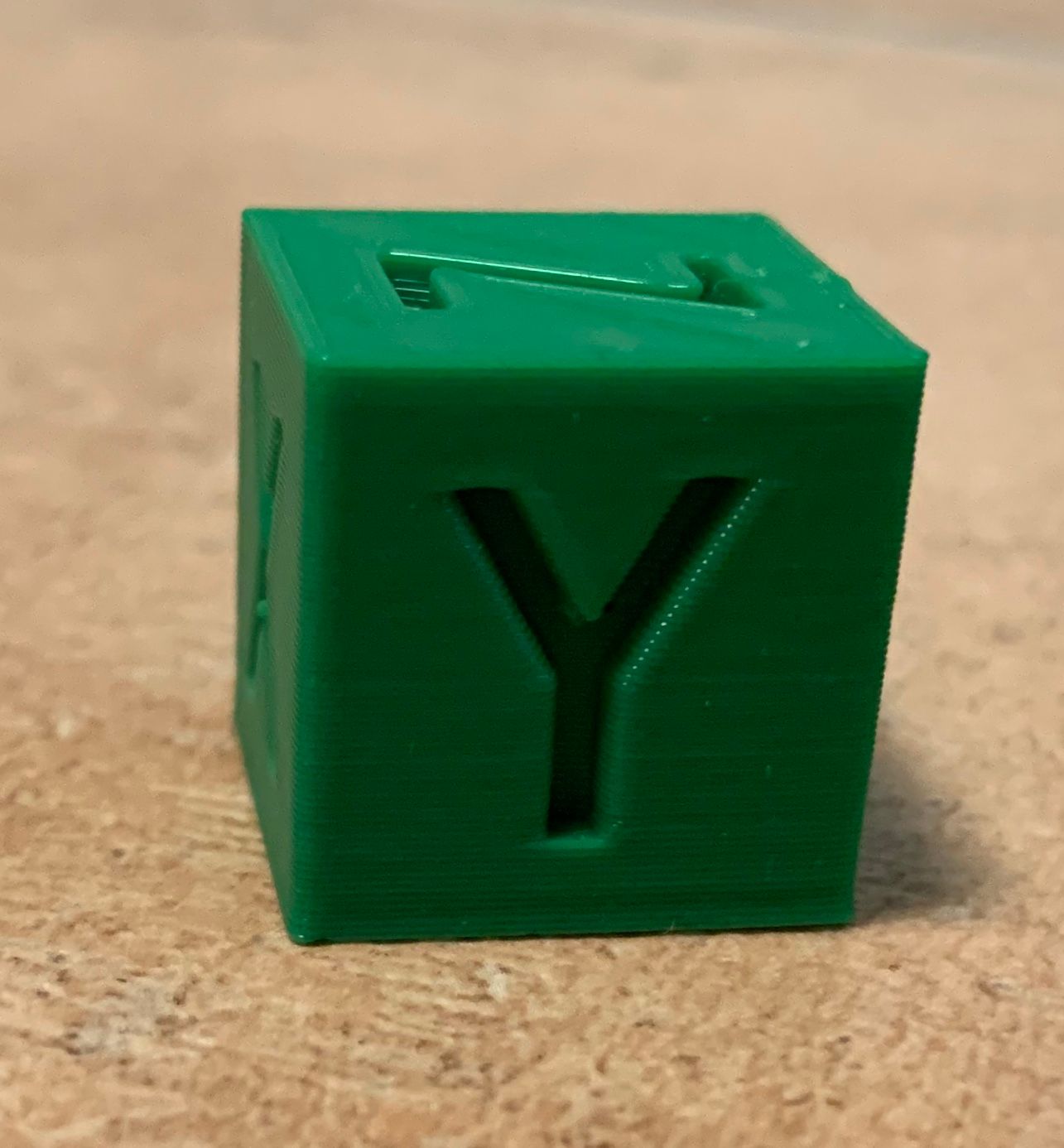Strange artifacts on vertical print surfaces
-
It's also likely that your slicer shifted the 'seem' position on the perimeters to a different place when processing the layers with the Y on it. It looks to me like the seem is above and below the circled area on the other layers, but somewhere else on the circled position.
On Slic3r you have options such as aligned, random, nearest, and rear which controls where it dumps the start stop point. Other slicers are likely to be the same. The effect of the seem can be minimised by well tuned pressure advance, and retraction.
-
@T3P3Tony Thanks for your quick response!
Your explanation looks valid to me - will do some more tweaking of those parameters.@DocTrucker I'm using PrusaSlicer, and have
seamset toaligned. But I am not sure what this really means (in fact, I also have no idea whatnearestmeans for this setting).
Will have a look at this setting though, as well as tuning retraction and probably pressure advance, too.Thanks!
-
I suspect that the slicer has decided to print that part of the perimeter in the opposite direction compared to the upper and lower parts.
-
Most of the time now I force the seam to a single location. In Prusa Slicer that would be rear, and in Cura you can define the XY point to align the seam.
I've found that most of the surface quality issues can be resolved by doing that. The human eye is very good at spotting breaks in patterns, so when the layer seam shifts to a new location the subtle change in the appearance of the layer due to thickness change or corner shape becomes very obvious. Forcing the seam to always be at the same location means the layers should look more uniform.
This does have some drawbacks, especially for filaments/hotends that tend to ooze a lot, since there may be more travel distance involved in always returning to the same location at layer change. For PETG I'll usually choose nearest to minimize travel distance.
-
@themelle said "But I am not sure what this really means (in fact, I also have no idea what
nearestmeans for this setting"See Slic3r manual page- towards the bottom.
-
@dc42 Thanks, sounds absolutely resonable. I'll have a look at the gcode - should be fairly easy to verifiy.
@Phaedrux Thank you! Will give
reara try and report back.@sinned6915 Thanks for the link to valueable information

I hope to have time to perform some test of the above theories this evening. Will come back with results

-
Okay, first test - got it!

It really just was a matter of setting "seam" to
rearinstead ofalignedin PrusaSlicer.Now on to fix that rather obvious seam on the back side ...
Thanks all!
-
It really depends on the model on where best to place the seam. On very simple regular shapes like test cubes and cylinders it's going to appear to be a much worse problem than it actually is on a more complex part with more places to actually hide the seam.
I wish the slicers did a better job of visualizing layer start lines and layer seams.
-
@Phaedrux said in Strange artifacts on vertical print surfaces:
I wish the slicers did a better job of visualizing layer start lines and layer seams.
KISS slicer does this very well actually.
It can be told to start and stop a perimeter in the first loop behind the perimeter, cross over and then make the perimeter and the cross back in.
You can tell it where to make that seam juncture- it can be told on which inside or outside corner, or random locations and align with corners. It figured this out by the change in the travel vector somehow to locate a corner. If you look to the right off the lower settings window, you can see the "X" of the cross over.
The trick is making the height and width of the cross over 'just right' so that its imperceptible.

-
@sinned6915 Thanks for that. I'll have to give kisslicer another try. It's inscrutability level is rather high.
-
@Phaedrux yes for "KISS" it is rather far from that!